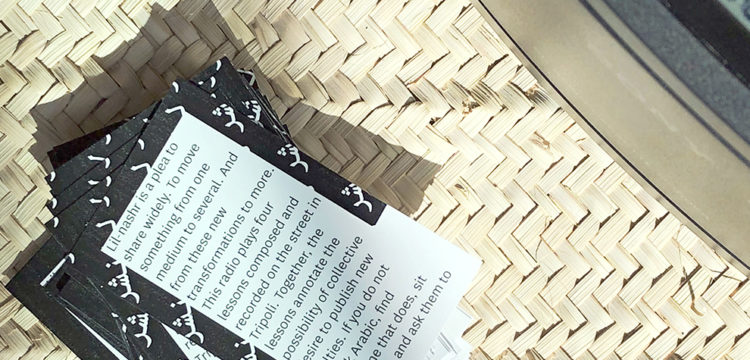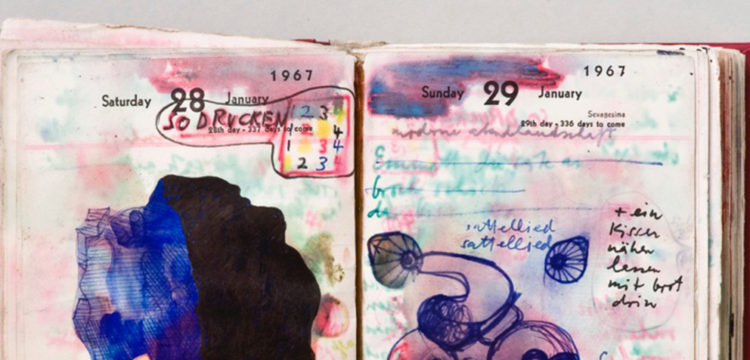The Artist’s Book
Archive Actualized #1: a conversation with Giorgio Maffei Bibliographic Studio
Archive Actualized is a series of interviews, a format that aims at exploring some of the Italian and international artist’s books archives and bibliographic studios. The term “actualized” is meant to highlight the potentiality of these locations, as keepsakes of circularity in a system, a (political) space with no specific rules, waiting to be activated.
For this first issue, Replica decided to start from a more institutionalized and well-known archive, namely the Giorgio Maffei Bibliographic Studio, so as to begin to lay a fundamental base for this research. Paola Varello, wife of the bookseller who passed away in 2016, answered some of their questions. Today she manages the Studio’s collection specialized in original publications by twentieth century visual and literary avant-garde artists.The bibliographic research already carried out by the Maffei gives prominence to the fact that the entire history of modern publishing continues to offer an immense research potential in all areas, covering original texts, exhibition catalogues, specialist magazines and in particular artists’ books, that fertile terrain which encouraged the meeting and cross-fertilization of many different art forms.
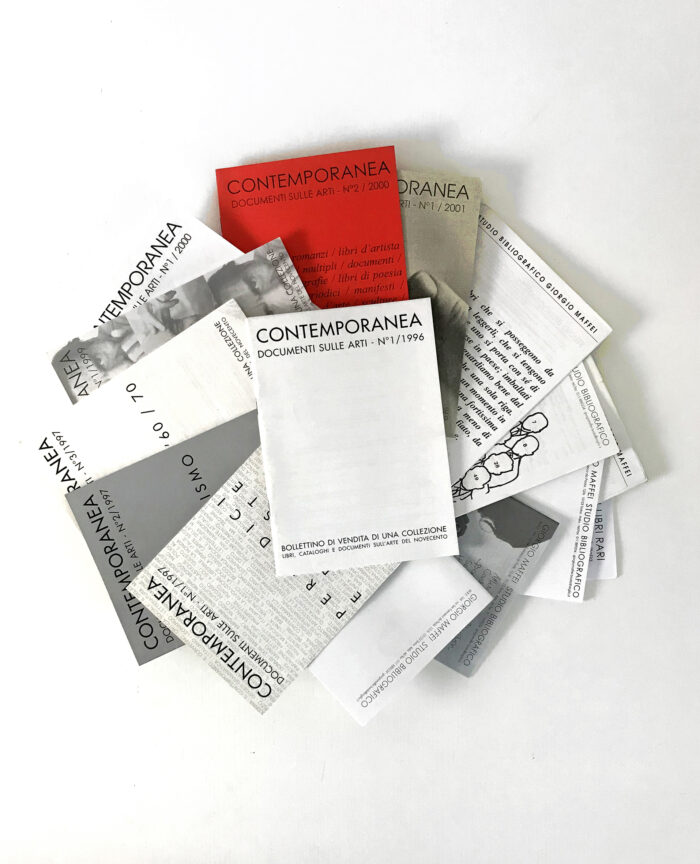
REPLICA: When dealing with the Artist’s Book, both in Italy and abroad, it’s impossible to ignore the one who can be considered one of the most important scholars and collectors, Giorgio Maffei. Thanks to his research and collection, he has contributed to the knowledge and dissemination of the artists’ books. The Giorgio Maffei Bibliographic Studio, in via S. Francesco da Paola, in Turin, is specialized in original publications from the artistic and literary avant-garde of the twentieth century. When was the studio born? What is its history?
PAOLA VARELLO: In 1996, when Giorgio was still working for an architectural studio, he wanted to publish a catalogue of books from his small personal collection. At the time he used to visit exhibitions and buy books quite randomly, driven by pure passion, following his own personal taste. Everything really happened by chance and resulted in 750 titles among art, literature, architecture and artist’s books. Perhaps that catalogue was among the first ones to propose this definition in its summary, which was still mysterious and not yet well-defined, at the time. At least here in Italy. The graphic design was decidedly sober, indeed—compared to the lush catalogues of today, decidedly severe: tiny characters and absence of illustrations, quite discouraging for anyone who was not a passionate bibliophile. I remember the stacks of copies of those small booklets arranged on the floor of the hallway of the house, ready to be bagged and mailed. Apart from printing, we did everything at home. The catalogue was proudly titled CONTEMPORANEA. Documenti sulle arti N.1/1996. It sold quite well and this small success was actually what started the new activity.
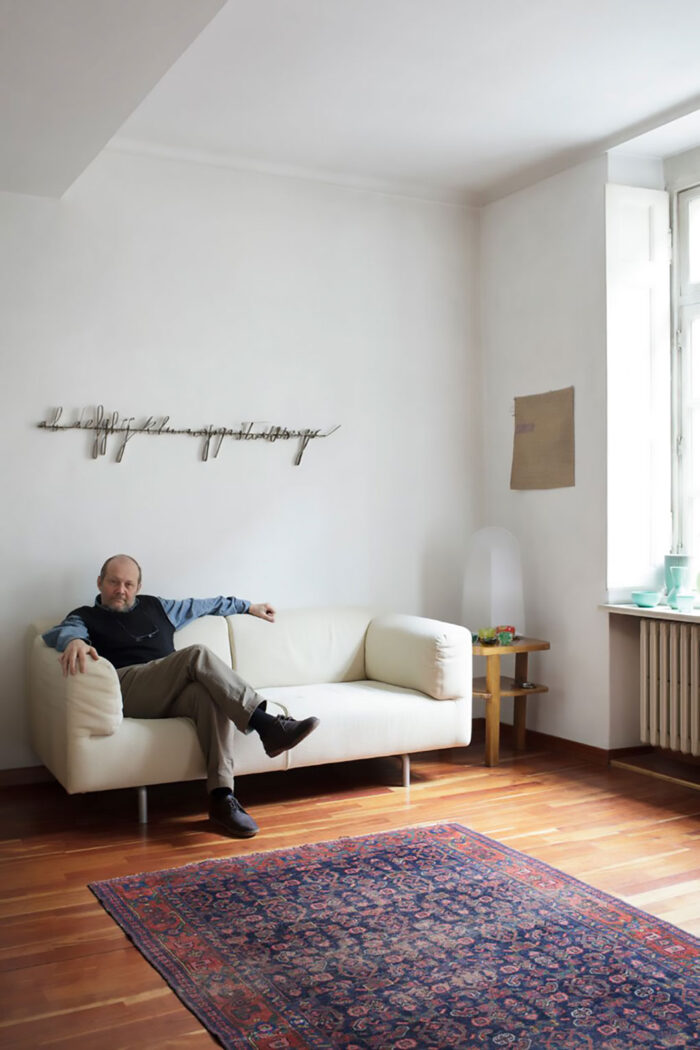
In an interview from 2013, Maffei complained about the lack of public collections dedicated to the artist’s book in Italy, often combined with the fact that the institutions are often unaware of owning these works. This, he said, has led to a poor collecting, which he defined as “the Cinderellas of international collecting”. In the eight years since the publication of this interview, do you think something has changed? Is there, in your opinion, a greater attention toward the Artist’s Book?
In recent years there has undoubtedly been a clarification on what an artist’s book is that has led to greater recognition by collectors and museum institutions. Probably some artist’s books were already part of both private and public collections, but they were still relegated to an anonymity that often placed them among the generic art books. Today the artist’s book has obtained the definitive recognition that gives back to this medium its true mandate, that of being a “book as a work of art”—a happy and early definition by Germano Celant.
Private collections have become a reality as well as public ones, despite the structural difficulties of the institutions, there are some excellent examples also in Italy. Today exhibitions and conferences are organized, there are more books on the subject, and new private and public collections are established. New generations of artists now consider it a regular tool for their work. The recognizability of the artist’s book is now a fait accompli.
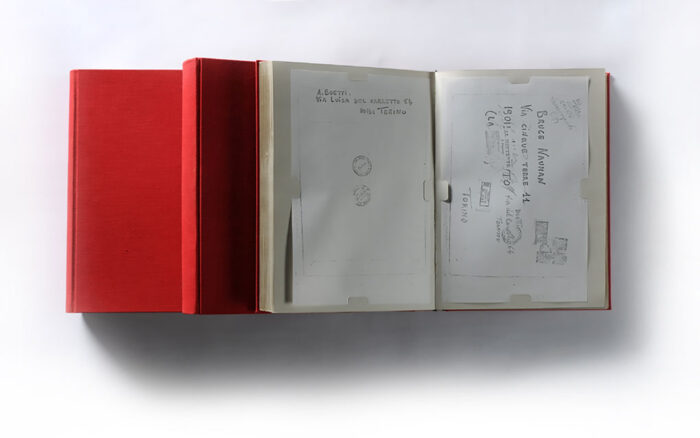
Alighiero Boetti, Dossier Postale, 1970
The term Bibliographic Studio often generates confusion and misunderstandings, historically linked to a niche interest, these places seem halfway between a specialized library, an art gallery, an archive and a place of production. How would you define a bibliographic studio? Is it possible to come up with some strategic hypotheses for these places to be better known and frequented?
In reality a bibliographic studio is not so different from a traditional antiquarian library. Perhaps only the intention is different: without opening to the public and receiving by appointment it has the propensity to develop a more exclusive, friendly and solid relationship with the visitor. The bookseller becomes an advisor, but sometimes the roles are reversed and he himself receives new stimuli and new motivations from the collector. Often he makes available for consultation or for a simple curiosity the personal collection that every good bookseller does not give up to show because he too is, first of all and almost always, a collector and behaves as such.
Specialized trade fairs, dedicated auctions, sales catalogues that are now very easily disseminated by computer, organized exhibitions and research, often conducted by bibliographic studies, are a good way to get out of private spaces and make the book meet with new audiences.
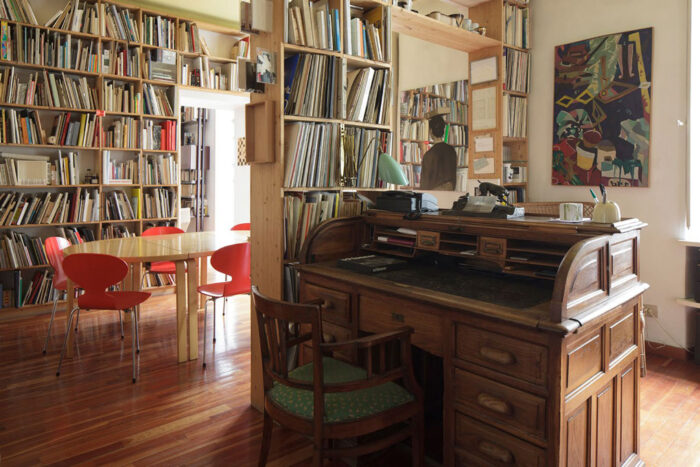
The Giorgio Maffei Bibliographic Studio has a rich selection of artist’s books and dedicated catalogues. What are the most iconic and significant volumes in your collection, according to you?
Certainly the books of the artists of Arte Povera, Boetti in particular. A passion certainly borrowed from the youthful attendance of exhibitions in various galleries in Turin in the seventies, but not only. The Arte Povera books responded perfectly to the idea that Giorgio had of the artist’s book, works in book form, books that the author conceives as a sculpture or a painting, objects born exclusively from his design, without mediation, works of art to all intents and purposes, which, however, thanks to the multiplicity of copies, are reachable, approachable even by the passionate little collector.


